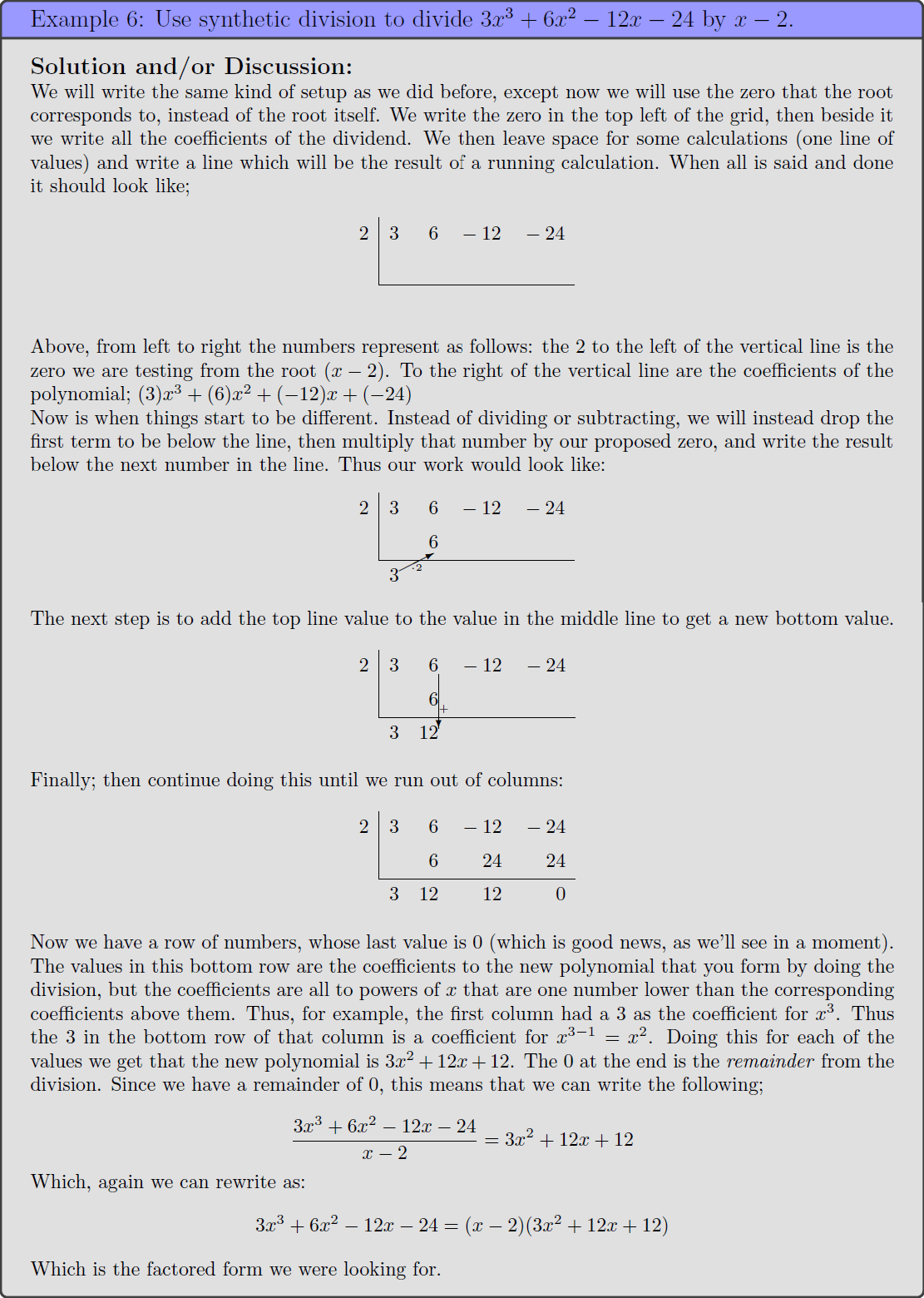Factor one polynomial by another polynomial using polynomial synthetic division
Since we typically want to divide out linear factors (things like rather than ) mathematicians have long ago developed a faster and more efficient technique for dividing out these specific types of factors, called Synthetic Division. It is very important to note right at the beginning here however that synthetic division only works with linear factors! You cannot use it to divide out polynomials with degree larger than one.
Synthetic division requires you have a root exactly of the form for some real number . Notice that this means we must have as a coefficient in front of the and we can’t use synthetic division to remove a root which is an irreducible quadratic.
Synthetic division is essentially the same as polynomial long division except that we omit the powers of . In essence, instead of copying down the polynomial (remembering to use a coefficient of zero for any missing powers of ), we write down (only) the coefficients, in a grid-like pattern. Then, instead of writing along the top a polynomial that includes powers of we will record (only) the coefficients of the polynomial that results from the division.
The advantage to doing this is that the algorithm for computing the number you need becomes a bit simpler. It turns out that the coefficients you need to use can be determined through a pattern of addition and multiplication rather than division and subtraction. Consider the following example;
